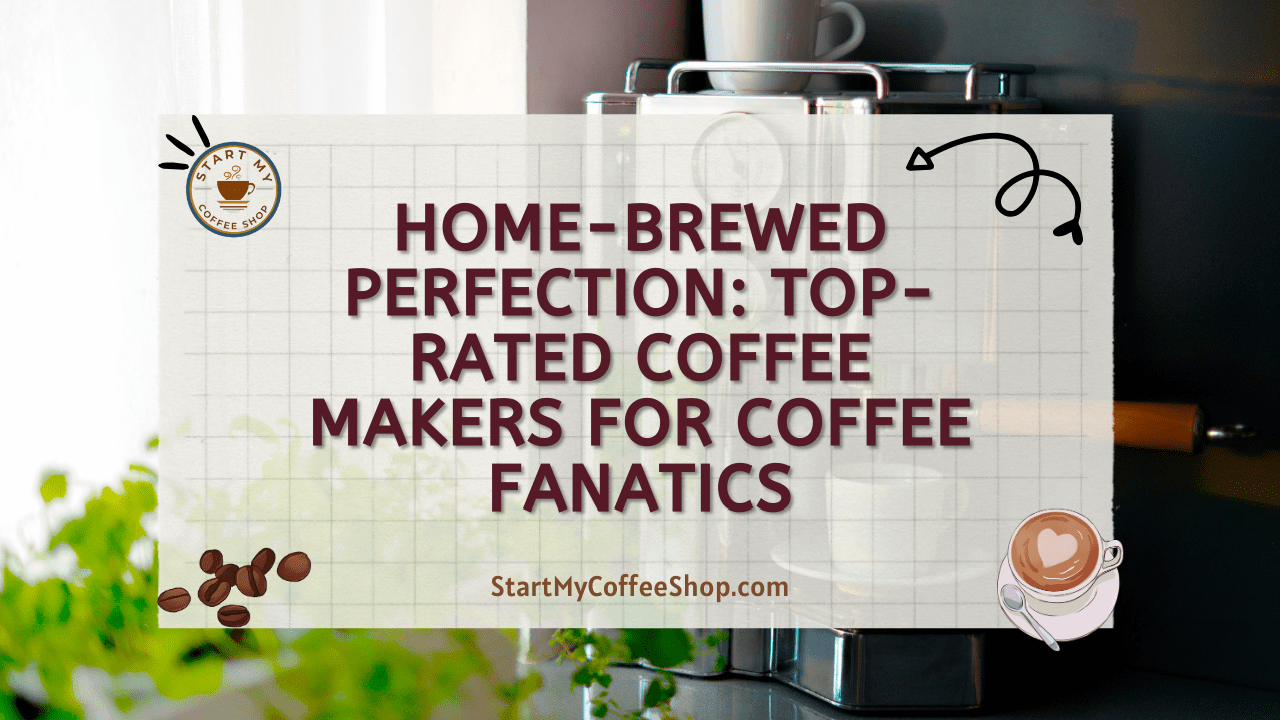As an Amazon Associate, I earn from qualifying purchases.
When I opened my coffee shop, the first thing I did was get to know my customers. First, I did a lot of study to figure out who my ideal customers were. Through polls, feedback forms, and watching my customers, I found out what they liked. It turned out that my customers were a mix of students who needed a quick coffee boost, businesspeople who wanted a quiet place to work, and families who wanted a comfortable place to enjoy their drinks. Because I knew this, I changed my offering to meet their many different needs, making sure there was something for everyone who came in.
As I watched how my customers bought things, I learned which menu items were the most popular and which ones were just not ordered very often. I was able to focus on giving a selection of items that my customers liked by removing any items that weren’t doing well with them thanks to this information. Making my menu simpler not only helped my customers decide what to order but also made my staff more productive, so we could serve our customers quickly and well.
- Customer preferences: Conduct market research and gather feedback from customers to understand their preferences and tailor your menu to meet their needs and tastes.
- Offer variety: Provide a diverse selection of coffee options, including espresso-based drinks, drip coffee, specialty brews, and alternative milk options, to appeal to a wide range of tastes and preferences.
- Seasonal specials: Incorporate seasonal ingredients and flavors into your menu to keep it fresh and exciting, offering limited-time specials or rotating menu items based on seasonal availability.
- Food pairing options: Pair your coffee offerings with a selection of pastries, sandwiches, or snacks that complement the flavors of your coffee and provide additional value for customers.
- Visual appeal: Design an attractive and visually appealing menu layout that is easy to read and navigate, using high-quality images and descriptive language to showcase your offerings and entice customers.
Prioritizing Quality and Consistency
Setting quality and consistency as the most important things has been my driving principle as a coffee shop owner. I made sure that the only places I bought coffee beans from were reliable. By trying out different roasts and brewing methods, I was able to find the best mix for both my business’s theme and my customers’ tastes. To keep brewing methods consistent and make sure that every cup of coffee served was of the best quality, I had to train my baristas very well.
I also paid close attention to the quality of the extra items like syrups, flavorings, and milk. Customers who care about their health liked that I chose organic and locally sourced foods whenever I could. It also fits with my commitment to the environment. Using regular quality control measures helped me stick to my standards and quickly fix any problems that came up. I was able to build a loyal customer base that trusted me to give them great coffee every time they came to my shop by putting quality and consistency first in every part of my offering.
Check out the best Cold Brew Coffee Maker + Chiller Kit.
Embracing Seasonality and Trends
As the owner of a coffee shop, I’ve found that following trends and the seasons is key to keeping my menu new and interesting. I’ve always made it a point to give seasonal flavors and fruits. In the summer, I serve cool drinks with ice, and in the winter, I serve warm drinks with spices. I was able to catch the essence of each season and give my customers new flavor experiences by adding seasonal ingredients like peppermint or pumpkin spice to my specialty drinks.
I’ve also kept a close eye on new trends in the coffee business because I’m always excited to try out new tastes and ideas. Adding new drinks to my menu, like oat milk lattes and cold brew cascara infusions, has helped me get more adventurous customers and make my coffee shop stand out from the rest. However, I’ve learned to be picky about which trends I follow so they fit with my brand and appeal to my target audience. My food stays current and appealing to a wide range of people because I balance new ideas with old favorites.
Check out the best Menu Tabletop Board with Wood Holder.
Offering Variety for Every Palate
One important thing I’ve done to improve the menu at my coffee shop is to make sure it fits a wide range of tastes and interests. It’s important to me to provide a lot of choices so that I can meet the needs of people with different tastes, dietary limits, and ways of life. On my menu, I’ve made sure that there’s something for every coffee fan, from drinks made with espresso to pour-over brews. By having different milk options like almond, soy, oat, and coconut milk, I can serve people who can’t have lactose or are vegan.
In addition, adding herbal teas, hot chocolate, and freshly squeezed juices to my menu has made sure that everyone feels welcome, even people who don’t drink coffee. Working with local bakeries and artists to get fresh, hand-made pastries has given my menu a bit of local taste and shown how diverse the food is in my area. By giving people a lot of options, I’ve been able to make a place where everyone feels welcome and where everyone can find something they love.
Check out the best Coffee Bar Gift Set.
Pricing Strategically for Profitability
Setting prices in a way that makes sense has been very important for keeping my coffee shop profitable and competitive in the market. I’ve taken the time to figure out how much each menu item costs to make, taking into account the cost of work, the cost of materials, and the profit margin I want to make. Based on this information, I’ve been able to set prices that show the value of what I’m selling while also covering my costs and making money.
I also set up tiered prices to work with customers with a range of budgets and tastes. By providing a range of high-end, moderate-priced, and inexpensive choices, I’ve been able to please a wide range of customers without lowering my profits. Some items have higher prices because they have qualities that make them more valuable, like organic ingredients or specialty roasts. I’ve also been able to make the most money during busy times or special events by using dynamic pricing techniques to change menu prices based on demand, seasonality, and the prices of my competitors.
Check out the best Coffee Shop Wooden Wall Menu Board.
Soliciting and Incorporating Customer Feedback
Asking for and using customer comments has been a big part of improving the menu at my coffee shop and the whole dining experience. I’ve asked customers to use comment cards, internet surveys, or social media to share their thoughts and ideas. Customers trust and stay loyal to me because I actively listen to their feedback and show that I’m responsive by quickly addressing concerns and making the changes they suggest.
I’ve been able to get detailed feedback on new menu items or possible changes by setting up focus groups or taste events. Getting to know my regulars and loyal customers has helped me build a sense of community and learn more about their wants and needs. Systematically looking at customer feedback has helped me find themes, trends, and places where I can improve. By using this information to improve my menu items, change the sizes of portions, or add new deals, I’ve been able to keep my menu relevant and appealing to my target audience. I’ve been able to set my coffee shop apart from the others by making my customers feel like they own it and are loyal by letting them help me make the menu.
Pros
- Enhanced Customer Satisfaction: By perfecting your coffee shop’s menu, you can tailor offerings to suit the preferences of your target demographic, leading to increased customer satisfaction and loyalty. Providing a well-curated selection of drinks and snacks ensures that patrons find something they love, encouraging repeat visits and positive word-of-mouth.
- Improved Profitability: A carefully crafted menu can contribute to improved profitability by optimizing pricing strategies, reducing waste, and maximizing sales. By offering a balance of high-margin items and crowd-pleasers, you can increase revenue while minimizing costs, ultimately boosting the bottom line of your coffee shop.
- Competitive Advantage: A standout menu can set your coffee shop apart from competitors and attract new customers. Embracing trends, incorporating seasonal flavors, and offering unique specialty drinks can pique the interest of discerning coffee enthusiasts and draw attention in a crowded market. A compelling menu can serve as a powerful marketing tool, helping your coffee shop stand out in the minds of potential customers.
Cons
- Menu Overwhelm: A menu that’s too extensive or complicated can overwhelm customers and lead to decision fatigue. Offering too many options may dilute the quality of your offerings and confuse patrons, ultimately hindering their dining experience and reducing overall satisfaction.
- Operational Complexity: Introducing new menu items or rotating offerings may increase operational complexity, requiring additional training for staff and adjustments to workflow. Managing inventory, sourcing seasonal ingredients, and ensuring consistency across a diverse menu can pose logistical challenges and strain resources.
- Risk of Missed Opportunities: Perfecting your coffee shop’s menu requires careful experimentation and analysis, which entails a degree of trial and error. Relying too heavily on customer feedback or market trends without considering your unique brand identity and vision may result in missed opportunities or a lack of differentiation in the market. It’s important to strike a balance between innovation and maintaining the essence of your coffee shop to ensure long-term success.
Conclusion
Making the menu for my coffee shop better has been an ongoing process that has taught me a lot and helped me grow. By using these tips, I’ve been able to improve my menu and give my customers unique experiences. Figuring out who my customers are, putting quality and consistency first, accepting seasonality and trends, catering to all tastes, setting prices strategically to make money, and asking for and using customer feedback have all been very important steps in this process.
The menu is more than just a list of items for me; it’s a part of my brand personality and a way to keep customers coming back. By making a menu that fits my customers’ tastes while still staying true to my vision, I’ve made my coffee shop a popular spot for both coffee lovers and people who just want to hang out. So, I want you to think about these suggestions. Try out new flavors and ideas, and I think you’ll see your coffee shop do well once the menu is right.
As an Amazon Associate Startmycoffeeshop.com earns from qualifying purchases. Startmycoffeeshop.com also participates in affiliate programs with ShareASale and other sites. Startmycoffeeshop.com is compensated for referring traffic and business to these companies.
To learn more on how to start your coffee shop, check out my startup documents here.
Disclaimer: The information provided by StartMyCoffeeShop.com (“The Site”) is for general informational purposes only. All information on the Site is provided in good faith. However, we make no representation or warranty of any kind, express or implied, regarding the accuracy, adequacy, validity, reliability, availability, or completeness of any information on the Site. Under no circumstance shall we have any liability to you for any loss or damage of any kind incurred as a result of the use of the Site or Reliance on any information provided on the Site. Your use of the Site and reliance on any information on the Site is solely at your own risk. This blog post is for educational purposes only and does not constitute legal advice. Please consult a legal expert to address your specific needs. Terms and Conditions.

Hi! I’m Shawn Chun
My adventure in coffee began when I first launched my first coffee shop back in the early 2000s. I had to figure out so many things on my own and to make it worse within 2 years of opening two large corporate coffee chains moved in just blocks away from me!
As I saw smaller and even some larger coffee shops in the neighborhood slowly lose customers to these giant coffee chains and slowly close up shop, I knew that I had to start getting creative…or go out of business.
I (like you may be) knew the coffee industry well. I could make the best latte art around and the foam on my caps was the fluffiest you have ever seen. I even had the best state-of-the-art 2 group digital Nuova Simonelli machine money could buy. But I knew that these things alone would not be enough to lure customers away from the name brand established coffee shops.
Eventually, through lots of trial and error as well as perseverance and creativity I did find a way to not only survive but also thrive in the coffee/espresso industry even while those corporate coffee chains stayed put. During those years I learned to adapt and always faced new challenges. It was not always easy, however, in the end, I was the sole survivor independent coffee shop within a 10-mile radius of my location. Just two corporate coffee chains and I were left after that year. All told the corporate coffee chains took down over 15 small independent coffee shops and kiosks and I was the last one standing and thriving.
Along the years I meet others with the same passion for coffee and I quickly learned that it is not only “how good a barista is” that makes a coffee shop successful, but the business side of coffee as well.
Hence why I started this website you are on now. To provide the tools and resources for up and coming coffee shop owners to gain that vital insight and knowledge on how to start a coffee shop successfully.
Stick around, browse through my helpful blog and resources and enjoy your stay! With lots of LATTE LOVE!
Shawn






